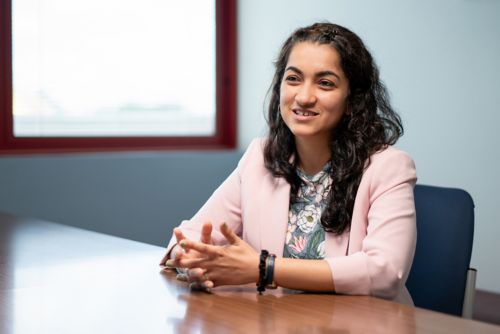St. Jude Family of Websites
Explore our cutting edge research, world-class patient care, career opportunities and more.
St. Jude Children's Research Hospital Home

- Fundraising
St. Jude Family of Websites
Explore our cutting edge research, world-class patient care, career opportunities and more.
St. Jude Children's Research Hospital Home

- Fundraising
Parul Rai, MD
Evaluating genetic and non-genetic risk factors for cardiac injury and exploring optimal treatment approaches
Overview
The connection between sickle cell disease and cardiac injury has long been recognized but has yet to be well understood, with a significant knowledge gap existing about the nature of cardiac injuries, which patients may be at risk, and what treatments may be most effective. My research focuses on understanding the pathogenesis of cardiac injury in patients with sickle cell, evaluating genetic and non-genetic risk factors, and exploring the optimal treatment approaches for this patient population.

Research Summary
Although sickle cell disease is known to be accompanied by injuries to other organ systems in the body, particularly in the cardiovascular system, a significant knowledge gap remains about the nature of such cardiac injuries. Investigators and clinicians require a better understanding of the connection between sickle cell disease and cardiac damage, which patients may be at risk, and what treatments may be most effective in modifying the course of the disease.
My research encompasses three major areas. The first involves evaluating the knowledge gap and the prevalence of cardiac injury in children and adolescents with sickle cell disease. In addition, my colleagues and I are investigating the potential genetic drivers of the disease and exploring the risk factors, pathogenesis, and optimal treatment approaches for diastolic dysfunction in this patient population.
Secondly, I am investigating the prevalence of cardiac injury in sickle cell disease to identify patients who show early signs of damage and the risk factors that may accelerate a particular cardiac injury called diastolic dysfunction. I lead an institutional research project at St. Jude that involves collaborating with cardiology, radiology, and diagnostic imaging experts to evaluate the coronary reserve of patients with sickle cell disease to determine whether they have adequate blood flow to the heart after stress, such as from exercise. I am the principal investigator on the MYPERS clinical trial, which uses PET myocardial perfusion imaging to evaluate diastolic dysfunction in sickle cell disease.
My third research focus is understanding the connection between cardiac injury and sickle cell disease, which leads to questions about the best possible disease-modifying therapeutic approaches. I am investigating the effectiveness of existing treatments, such as hydroxyurea and chronic transfusion, and newer therapies with beta-blockers to improve diastolic dysfunction.
In addition to my research work, I serve as the director of the Adolescent Sickle Cell Clinic and work on pharmacological and non-pharmacological interventions and individualized pain plans for patients with sickle cell disease.

Selected Publications
About Dr. Rai
Dr. Parul Rai obtained her MD at Grand Medical College and Sir JJ Group of Hospitals in India. She further pursued her passion for pediatric medicine and completed her pediatric internship and residency at Sinai Hospital in Baltimore. She delved deeper into her studies to pursue a pediatric hematology and oncology specialty, completing a fellowship at UCSF Benioff Children’s Hospital in California. From there, Dr. Rai honed her expertise further and became a Sickle Cell Translational Research Scholar at Cincinnati’s Children’s Hospital and Medical Center before becoming an Assistant Member of the St. Jude Faculty, where she studies cardiac injury in sickle cell patients.

Affiliations and collaborations
Contact us
Postal Address
Parul Rai, MD
Instructor
Department of Hematology
MS 800, Room R5044
St. Jude Children's Research Hospital
Follow Us

Memphis, TN, 38105-3678 USA GET DIRECTIONS